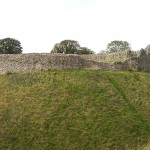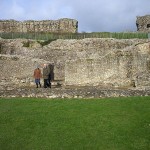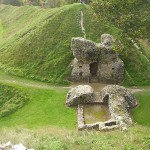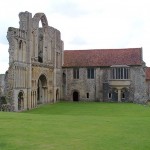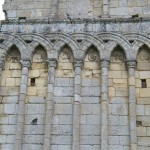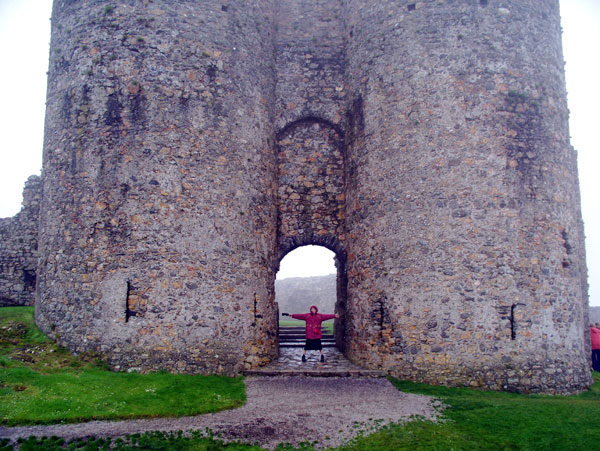
CADW
Criccieth Castle is a native Welsh castle whose remains dominate the coastal town of Criccieth. The castle was apparently commenced at the beginning of the 13th century. Later, it was occupied for a time by the English, who are thought to have remodelled it. It was destroyed by the Welsh during Owain Glyndwr’s rebellion in the 14th century.
The remains are dominated by the gatehouse, which looks like an English design but was almost certainly built by the Welsh. There are superb views from the castle mound as far as Harlech, Snowdonia, etc. Bring your binoculars.
The castle is worth a visit if you are in the area. Given its ruined state, looking at the castle will not detain you very long.
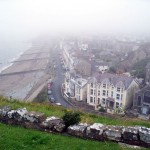
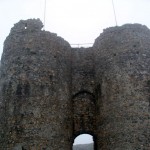
Category: Ruin
ruins of all kinds
Lilleshall Abbey, Shropshire
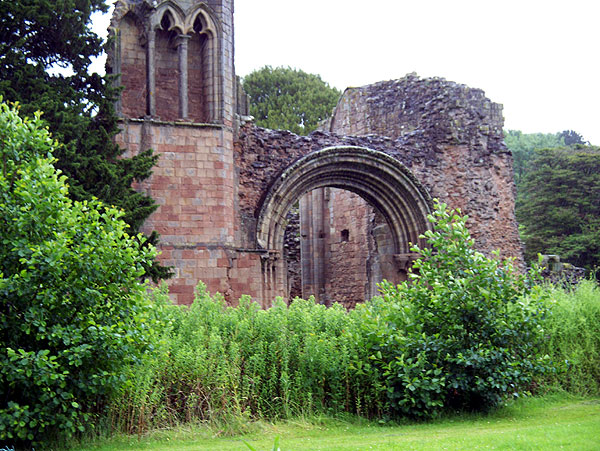 English Heritage
English Heritage
An Augustinian abbey, dissolved by Henry VIII. It was later adapted as a Civil War stronghold. Substantial ruins of the Abbey church and other buildings remain, in a deeply rural setting. As one enters the nave, an inconspicuous spiral stairway on the left leads up to a viewpoint high up on the wall. There are some elaborately carved doorways.
It’s worth a visit if you are passing near Telford.
St Peters Church, Milton Keynes
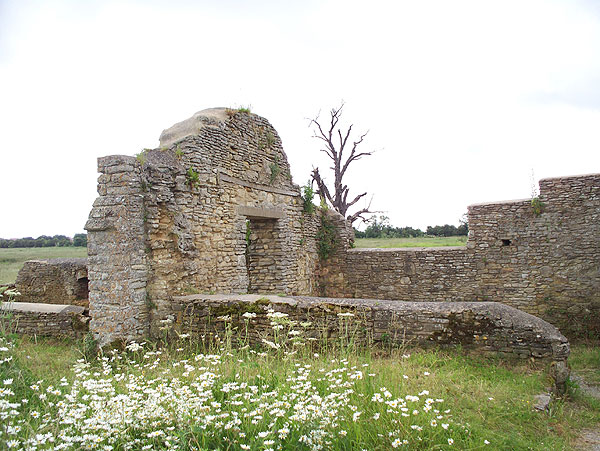 St Peters Church is situated in the new Stanton Low Country Park, near Great Linford, Milton Keynes. The church, dating from c. 1150, served the vanished village of Stanton Low, and was in occasional use in the early 20th century, but the roof collapsed in 1956 and the building is now a sad ruin.
St Peters Church is situated in the new Stanton Low Country Park, near Great Linford, Milton Keynes. The church, dating from c. 1150, served the vanished village of Stanton Low, and was in occasional use in the early 20th century, but the roof collapsed in 1956 and the building is now a sad ruin.
There is a preservation society – see St Peters group
The site can be awkward for the non-local to find. There is a roadway leading from the main road that goes past it: find the Black Horse pub, and follow the roadway immediately to the east of the canal. This roadway is single-track and there is nowhere to park or pass, so it is not advised to drive down it unless you really have to. A short distance further east, another roadway leads to the Hanson Centre, which has parking and a shorter footpath to the church. The church itself is surrounded by a fence and entry is discouraged.
Grassington, Yarnbury mining area, W. Yorks
The former mining landscape near Grassington makes an interesting area for a walk. Take the road north-eastwards from Grassington High Street towards Yarnbury. If you are in a car, just keep going till you run out of tarmac road. There’s plenty of room to park at the end, so don’t worry.
Around here is Yarnbury House, which was the mine agent’s house and office. Head along the track in the direction of the chimney, which can be seen in the distance to the east. Look out for noticeboards describing relics of interest. The track passes an area dotted with shallow shafts, and other relics including a post-war reprocessing plant. As you approach the chimney and leave the track, you should encounter the long horizontal flues running from the smelter sites up to the chimney. The structure of the flues can be seen in places where they have collapsed.
You should take with you a map that identifies the various relics, so that you can check out any that are on your line of walk. The tracks continue southwards to Hebden Moor mines and Hebden village. If you go far enough to the north-east, you will reach Mossdale (use a map). If you don’t want to retrace your steps, satellite pictures indicate that taking a left at a crossroads near Coalgrovebeck Dam will loop you back to Yarnbury, passing 3 more disused mines.
Segontium Roman Fort, Gwynedd
I didn’t quite manage to see this, but it’s in the outskirts of Caernarfon, on the A4085 Beddgelert road. When I got there, the main part was locked up. There’s also a museum building, (not NT). The seasonal opening hours were Tue-Sun 12.30 to 16.30. Another part of the site is across the road, and IIRC can be accessed anytime.
Looks like it would be worth a look if you are in Caernarfon. You can park in the road.
Gwrych Castle, Conwy

Gwrych Castle was built between 1812 and 1822 for Lloyd Hesketh Bamford-Hesketh. Various architects and designers were involved. The Craches had a hand in furnishing the interiors. Between 1909 and 1914, Arts and Crafts architect, Detmar Blow, in conjunction with Charles Ernest Elcock, added the famous yet theatrical Italian marble staircase and renovated the state apartments.
During WWII, Gwrych was requisitioned by the Government and housed two hundred Jewish refugees. Leslie Salts then bought the building in 1948 and successfully opened Gwrych to the public for twenty years. The Castle was nicknamed ‘The Showplace of Wales’ and attracted nearly ten million visitors.
Between 1968 and 1989 the Castle had many owners and many different uses. Gwrych finally closed to the public during the winter of 1985, never to reopen. Up until 2005, the weather, heartless vandals and New-age travelers had looted and ravaged the building to the point of near dereliction. Recent photos make it clear that large parts are no more than roofless shells. Since then, there have been efforts to consolidate the building and the current owners hope to convert it into a luxury hotel.
While travelling to Conwy to see the castle there, I saw from my car a huge unknown castle on a hillside – which I eventually identified as Gwrych, near Abergele. My schedule did not permit me to investigate further on the return leg of my trip, but you can find out more here: http://www.gwrychtrust.co.uk/index.html The Gwrych Castle Preservation Trust would welcome your support. This is a sad example of what can happen to a historic listed building when its owners run out of cash. For obvious reasons you cannot visit the castle, but the Gwrych preservation trust claim there are public rights of way through the estate (disputed in comment). Anyway, Google Streetview indicates that the A547 runs within yards of the castle outer wall and gates. (pic Wikimedia, CC-SA, Dot Potter)
Minster Lovell Hall & Dovecote, Oxfordshire
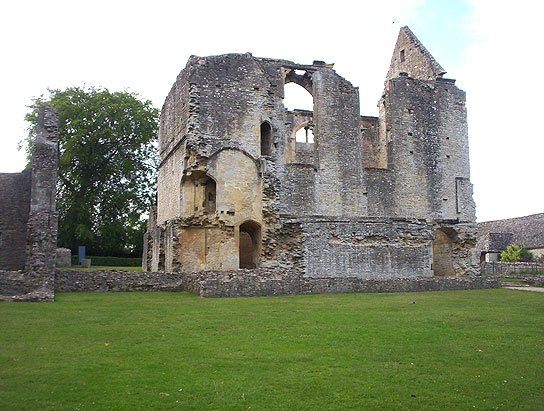
English Heritage.
Minster Lovell Hall is, or was, a 15th century riverside manor house. The ruins of a fine hall and corner tower can be seen, also a complete dovecote.
The ruins are quite interesting and worth a look if you are passing that way. The setting is pleasant and peaceful.
I found that finding the Hall was more troublesome than it should have been, because of vague or absent signage. First find the village, then find the church. Park up and look behind the church. The signs directing you to the dovecote are also rather vague, but if you look for a circular building with a pointy roof, you should be able to spot it in the middle distance.
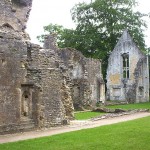
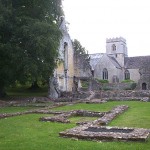
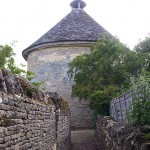
Thetford Church of Holy Sephulcre, Norfolk
English Heritage.
This is the only surviving remains in England of a priory of Canons of the Holy Sepulchre, who aided pilgrims to Christ’s tomb. The ruined nave of their 14th century church was later used as a barn.
Sat-nav can take you to Canons Close in a housing estate, where the back of the site is at the end of a short cul-de-sac to the right. If you arrive there, you may as well look, but a better view can be had from the other side, on the A134, where there are one or two interpretation panels. The walls stand to near original height.
Thetford Priory, Norfolk
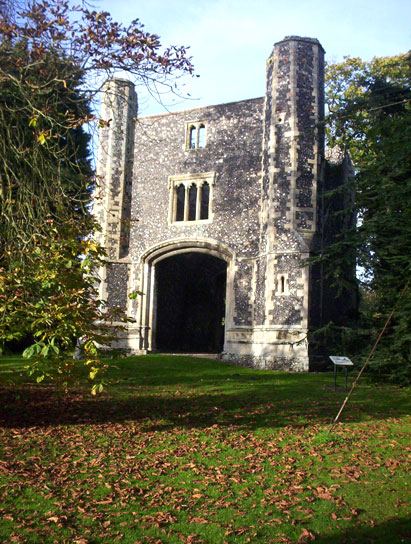
Thetford Priory was founded in the early 12th century and was a burial place for Earls and Dukes of Norfolk, and a magnet for pilgrims. Surviving parts include the lower walls of the church and cloister, and the impressive shell of the prior’s lodging, and, further away from the main site, an almost complete 14th century gatehouse.
The surviving ruins are impressive and quite extensive. A pathway from the main site leads to the gatehouse. The priory site is tucked away behind modern housing and may be awkward to find. Road access is at the S. end of Abbeygate. In the late afternoon, it seems to be a gathering place for the local youth, and when I was about to leave, I found that the lane leading to the car parking area was blocked by the police and a parked car, as the police obliged some scruffy individuals to help them with their inquiries.
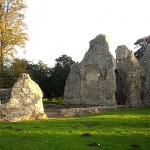
Castle Acre, Norfolk
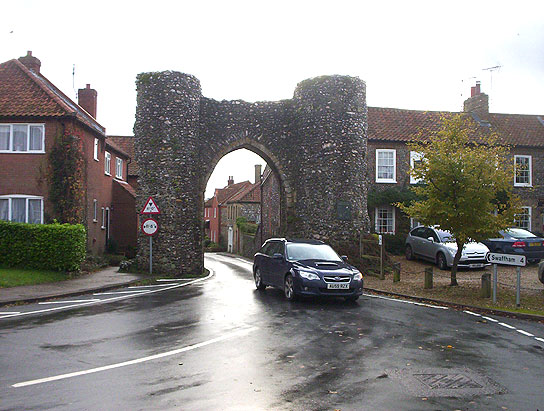
There are three separate attractions in Castle Acre, but as one would hardly travel to look at one without checking the other two, I’ll deal with all three here.
Castle Acre Castle: Founded in the 11th century as a stone built country house, it was progressively converted into a strong keep, defended by stone walls and surrounded by immense earthworks. The castle is now much ruined but the scale of the earthworks and baileys is impressive.
Castle Acre Village and Bailey Gate: At the same time that the castle was being fortified, a planned town was being built alongside, protected by earthwork defences and stone gatehouses. The north or Bailey Gate still survives, with the village street running between its towers. The village streets have some older buildings, and the ancient street layout can still be traced.
Castle Acre Priory: This is one of the largest and best preserved monastic sites in England, founded around 1090. The remains of the church have interlocking round arches. The west range of accommodation is virtually complete and full roofed, and includes a chamber sumptously revamped in Tudor times. There is a lot to look at, including exhibitions.
If you visit the EH Castle Acre Priory website, you can download maps and walking routes for the Priory and the castle and town.
Update 2012: The Priory is well worth a visit of an hour or two. A free audio guide is available which is almost too verbose at times – you should probably listen to the first two items before leaving the Visitor Centre. It is clear that the buildings were very fine before they were stripped of cut stone and other valuable materials at the Dissolution. Most of the West Front with its carved stone still survives. The Prior’s lodgings which formed a useful residence after the Dissolution are still roofed and relatively complete. The Priory is about ¼ mile west of the village – turn left on exiting uphill at the Bailey Gate.
